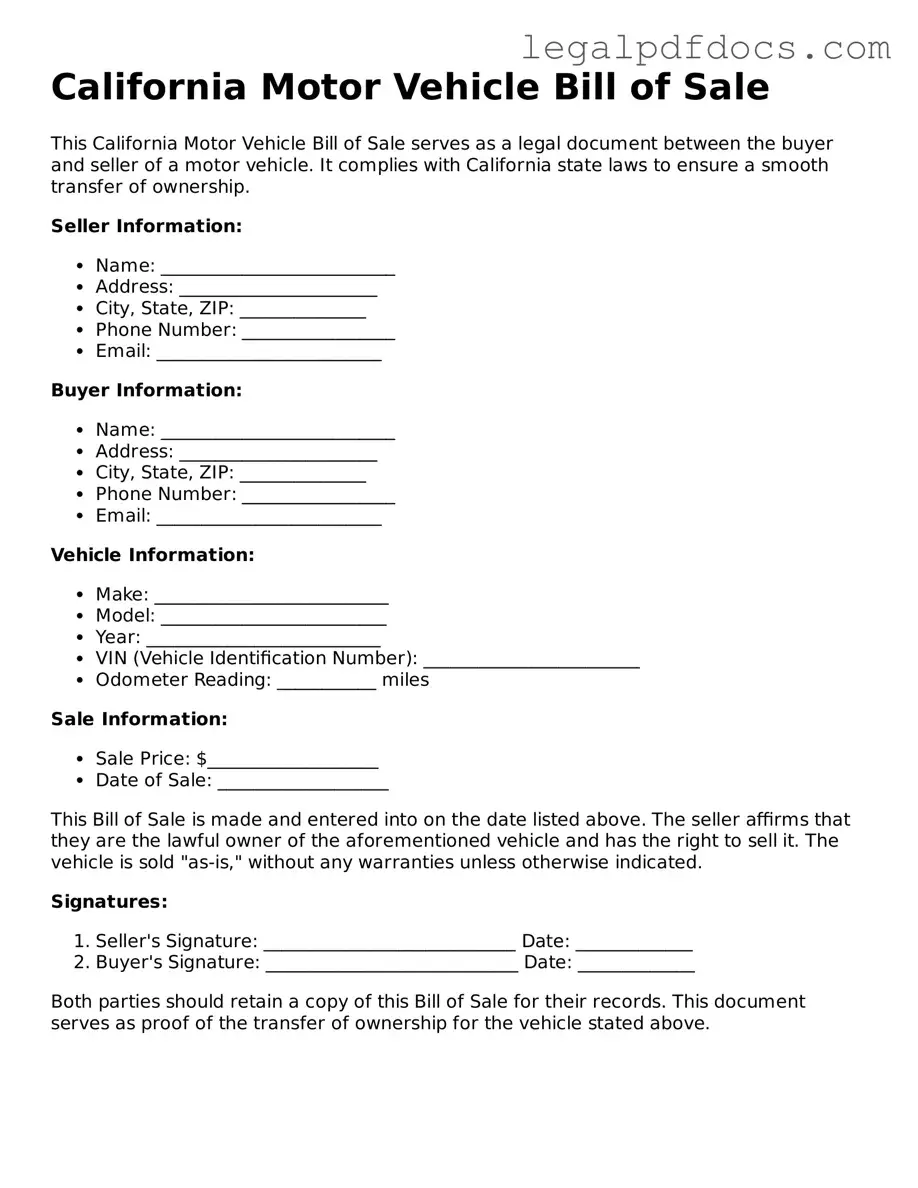Official Motor Vehicle Bill of Sale Form for California
The California Motor Vehicle Bill of Sale form serves as a crucial document for transferring ownership of a vehicle from one party to another. This form not only provides essential details about the vehicle and the transaction but also protects the rights of both the buyer and the seller. If you are ready to complete your vehicle sale, please fill out the form by clicking the button below.
Open Motor Vehicle Bill of Sale Editor Here
